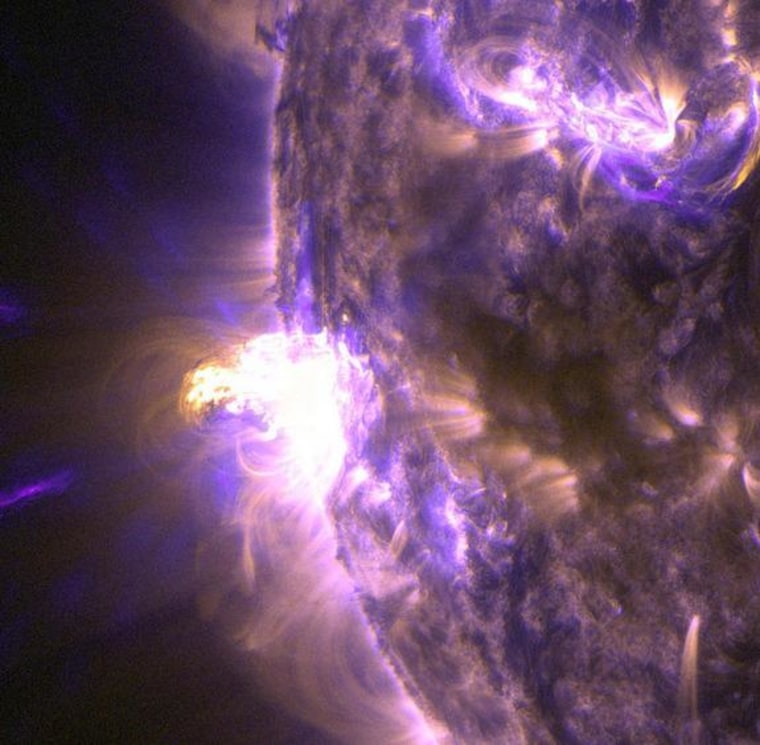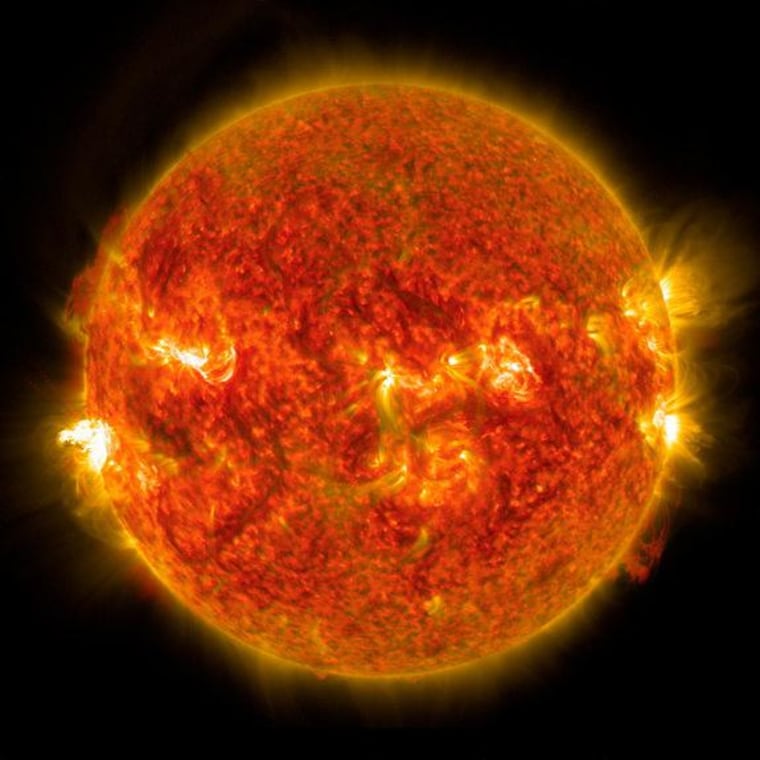The sun kicked off this week with an explosive solar flare that, while not aimed directly at Earth, may be a hotspot to watch over the next few days. The solar flare erupted on Sunday morning from an active sunspot known as AR2151.
Two sun-watching spacecraft captured stunning video of Sunday's solar flare as it leapt off the surface of the sun at 8:16 a.m. ET. While sunspot AR2151 wasn't facing Earth at the time of the flare, it is a place to watch in the days and weeks ahead.
"The responsible sunspot will turn toward Earth in the days ahead, boosting chances for geoeffective solar activity as the week unfolds," experts with the space weather website Spaceweather.com wrote on Sunday.

Sunday's flare was an intense M5.6 solar eruption on the scale used by scientists to measure space weather events. M-class storms are about 10 times weaker than X-class flares, the most powerful storms on the sun, NASA spokeswoman Karen Fox wrote in a statement.
"Solar flares are powerful bursts of radiation," Fox added. "Harmful radiation from a flare cannot pass through Earth's atmosphere to physically affect humans on the ground, however — when intense enough — they can disturb the atmosphere in the layer where GPS and communications signals travel."
When aimed at Earth, M-class solar flares can amplify the planet's northern lights displays, causing amazing aurora views for observers at high latitudes. Earth-directed X flares, meanwhile, can pose a danger to astronauts in space, as well as interfere with satellite communications and navigation systems.

The Sunday solar flare was captured on video by NASA's powerful Solar Dynamics Observatory and the Solar Helospheric Observatory (SOHO) overseen by NASA and the European Space Agency. The two space observatories are part of a fleet of spacecraft keeping a close eye on the sun's space weather events.
— Tariq Malik, Live Science
This is a condensed version of an article that appeared on Live Science. Read the entire story here. Email Tariq Malik at tmalik@space.com or follow him @tariqjmalik and Google+. Follow us @Spacedotcom, Facebook and Google+.
- Spectacular Spitfire Snapped By Two Spacecraft | Video
- Solar Flares: A User's Guide (Infographic)
- Solar Quiz: How Well Do You Know Our Sun?
- Biggest Solar Flares of 2014: Sun Storm Photos
Copyright 2014 SPACE.com, a TechMediaNetwork company. All rights reserved. This material may not be published, broadcast, rewritten or redistributed.